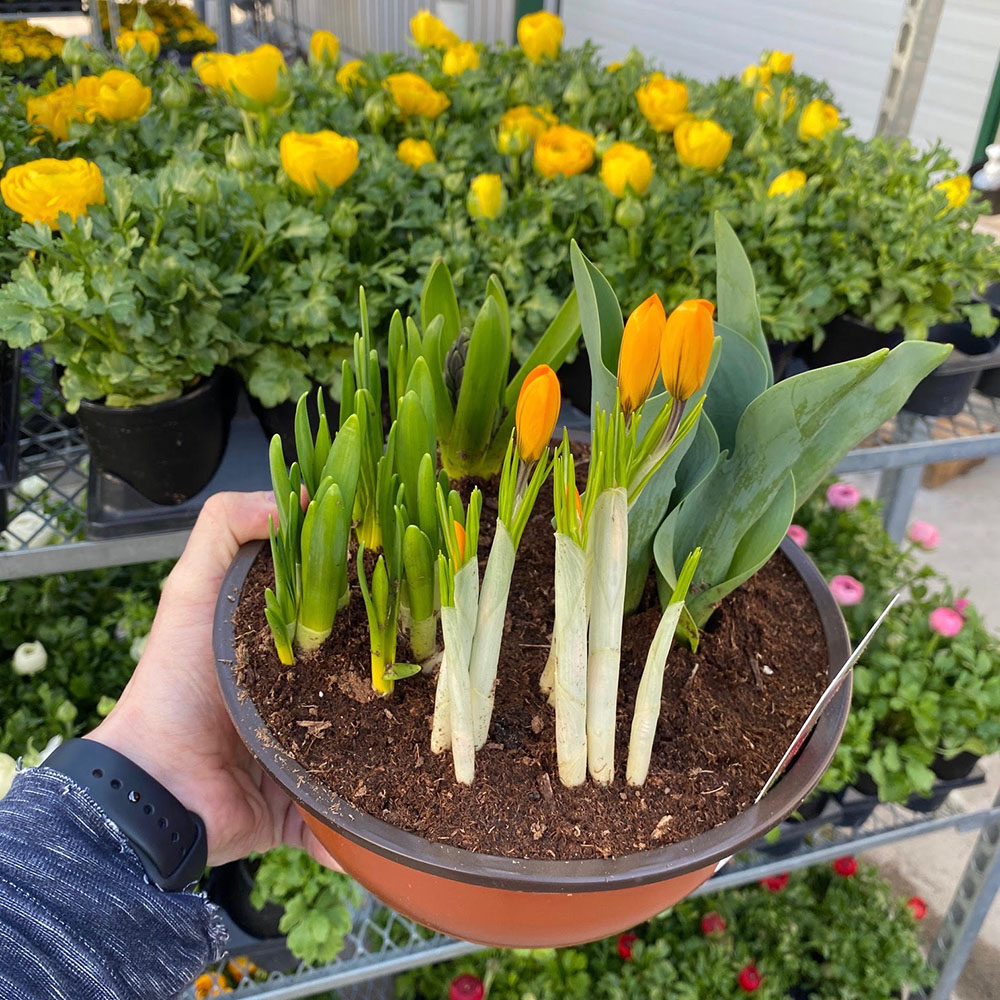
How To Plant Spring Bulbs
After months of freezing temperatures, blowing snow and long dark nights the sight of bulbs sprouting up is a welcome sign that warmer days are coming. Bulbs are a wonderful way to give your garden a face lift after all the snow is gone. They spring up just as the weather is changing from cold to warm, no other group of plants can provide such a display of colour as early as bulbs.
With so many other fall tasks to complete (raking, mulching, watering) some gardeners may overlook planting fall bulbs in order to keep their checklist to a minimum. But achieving amazing spring colour couldn’t be any easier than simply Dig, Drop, Done! Check out our bulb planting tips below.
When to Plant:
The best time to plant bulbs is from September to mid-October. Bulbs are grown best when the temperature is cooling off (15°C or lower is great). While there is no real time that is too late, so long as the ground hasn’t frozen up yet, planting before mid-October also allows your bulbs to still have enough time to set roots.
Preparing Your Flower Beds:
All bulbs thrive in sunnier locations. To get the most from your bulbs, choose a location with 6+ hours of direct sun per day. Remember that you can plant under deciduous trees too as in the spring the leaf canopy has not yet developed.
Before planting your bulbs, be sure to work the soil so it is loose to allow bulbs to root easier. If you have a heavier soil like clay consider amending it with organic matter (compost is great), gypsum or a lighter soil, ex. peat moss.
How to Plant:

The most common question about bulbs is how deep to plant them. A good rule to follow is planting your bulb 2-3 times the depth of their height. For example, if your bulb is 2″/6cm in height, you should plant it 4-6″/10-15cm deep. When planting your bulbs it’s a great idea to include a handful of Blood & Bone meal in the planting hole. This will give your bulbs an extra bit of ‘food’ and help them develop quickly before winter sets in. After planting a bulb, fill the whole with soil, tamp gently and water well afterwards.
If you’ve purchased a combination package or are creating your own bulb mix, grouping them together in clusters will give you an attractive natural look, especially when planting blended bulb packages. Just make sure your bulbs aren’t touching when you plant them together. Spacing them at least 2″/5cm apart so they have room to root out is ideal.
Maintenance & Tips:
Bulbs really are the ultimate garden choice for low maintenance gardeners, living up to the slogan “dig, drop, done”. They require very little attention in the spring and are easy to plant in the fall. After bulbs have finished blooming in the spring many gardeners wonder if they can cut the stems and foliage away or how they can remove the eyesore from their gardens and freshen the look with spring annuals or perennials.
Once your bulbs have finished blooming, allow the foliage to die back naturally. Tug on the stems of completely brown and wilted leaves. If you’d prefer to not look at the withering foliage of your bulbs we’d recommend considering planting your bulbs between groundcover perennials like hostas, lady’s mantle or coreopsis. The perennials will grow up in spring and fill in as bulbs wither up hiding them from sight.

Dealing with Animals
Some people seem to be in a constant battle with pesky animals. If squirrels are a bother in your neighbourhood and you fear that they’ll dig up your bulbs, we recommend soaking your bulbs beforehand in a mixture of Bobbex. Bobbex is a deer repellent that also works effectively on squirrels, rabbits and other critters. If deer are a problem in your gardens, we carry deer-resistant varieties of bulbs. Daffodils, hyacinth, allium and fritillaria will stand up to deer better than other types of bulb flowers.
Additional Resource:
For more planting tips, ideas and pictures check out Dig, Drop, Done, the bulb industry’s consumer site, it’s a great resource and worth checking out!




